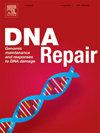染色DNA点检测(SD3):一种自动化工具,用于定量沿单个拉伸DNA分子的荧光特征
IF 2.7
3区 生物学
Q2 GENETICS & HEREDITY
引用次数: 0
摘要
DNA的主要信息是它的四个字母序列,它构成了遗传信息,传统上是用测序方法读取的。然而,DNA也可以携带其他重要信息,如表观遗传标记和DNA损伤。这一信息最近被利用荧光标记沿着单个DNA分子可视化。DNA荧光标记的定量是通过计算玻璃表面拉伸DNA上每个DNA分子每长度的“点”的数量来完成的。到目前为止,一个主要的挑战是缺乏标准化的数据分析工具。专注于DNA损伤,我们在这里提出了一个基于matlab的自动化软件,染色DNA点检测(SD3),它使用一个强大的方法来寻找DNA分子和估计沿每个分子的点的数量。我们将从暴露于H2O2的细胞中提取的DNA作为模型系统,通过将结果与人工分析结果进行比较,验证了SD3。我们的研究结果表明,与人工计数相比,SD3具有较高的准确性,并且减少了分析时间。SD3允许用户定义关于DNA分子的特定参数和点的位置,包括在分析过程中通过用户友好的界面。我们预计,我们的开源软件可以广泛应用于单个DNA分子的分析及其在研究和诊断中的修改。本文章由计算机程序翻译,如有差异,请以英文原文为准。
Stained DNA Dot Detection (SD3): An automated tool for quantifying fluorescent features along single stretched DNA molecules
The main information in DNA is its four-letter sequence that builds up the genetic information and that is traditionally read using sequencing methodologies. DNA can, however, also carry other important information, such as epigenetic marks and DNA damage. This information has recently been visualized along single DNA molecules using fluorescent labels. Quantifying fluorescent labels along DNA is done by counting the number of “dots” per length of each DNA molecule on DNA stretched on a glass surface. So far, a major challenge has been the lack of standardized data analysis tools. Focusing on DNA damage, we here present a Matlab-based automated software, Stained DNA Dot Detection (SD3), which uses a robust method for finding DNA molecules and estimating the number of dots along each molecule. We have validated SD3 by comparing the outcome to manual analysis using DNA extracted from cells exposed to H2O2 as a model system. Our results show that SD3 achieves high accuracy and reduced analysis time relative to manual counting. SD3 allows the user to define specific parameters regarding the DNA molecule and the location of dots to include during analysis via a user-friendly interface. We foresee that our open-source software can have broad use in the analysis of single DNA molecules and their modifications in research and in diagnostics.
求助全文
通过发布文献求助,成功后即可免费获取论文全文。
去求助
来源期刊

DNA Repair
生物-毒理学
CiteScore
7.60
自引率
5.30%
发文量
91
审稿时长
59 days
期刊介绍:
DNA Repair provides a forum for the comprehensive coverage of DNA repair and cellular responses to DNA damage. The journal publishes original observations on genetic, cellular, biochemical, structural and molecular aspects of DNA repair, mutagenesis, cell cycle regulation, apoptosis and other biological responses in cells exposed to genomic insult, as well as their relationship to human disease.
DNA Repair publishes full-length research articles, brief reports on research, and reviews. The journal welcomes articles describing databases, methods and new technologies supporting research on DNA repair and responses to DNA damage. Letters to the Editor, hot topics and classics in DNA repair, historical reflections, book reviews and meeting reports also will be considered for publication.
 求助内容:
求助内容: 应助结果提醒方式:
应助结果提醒方式:


